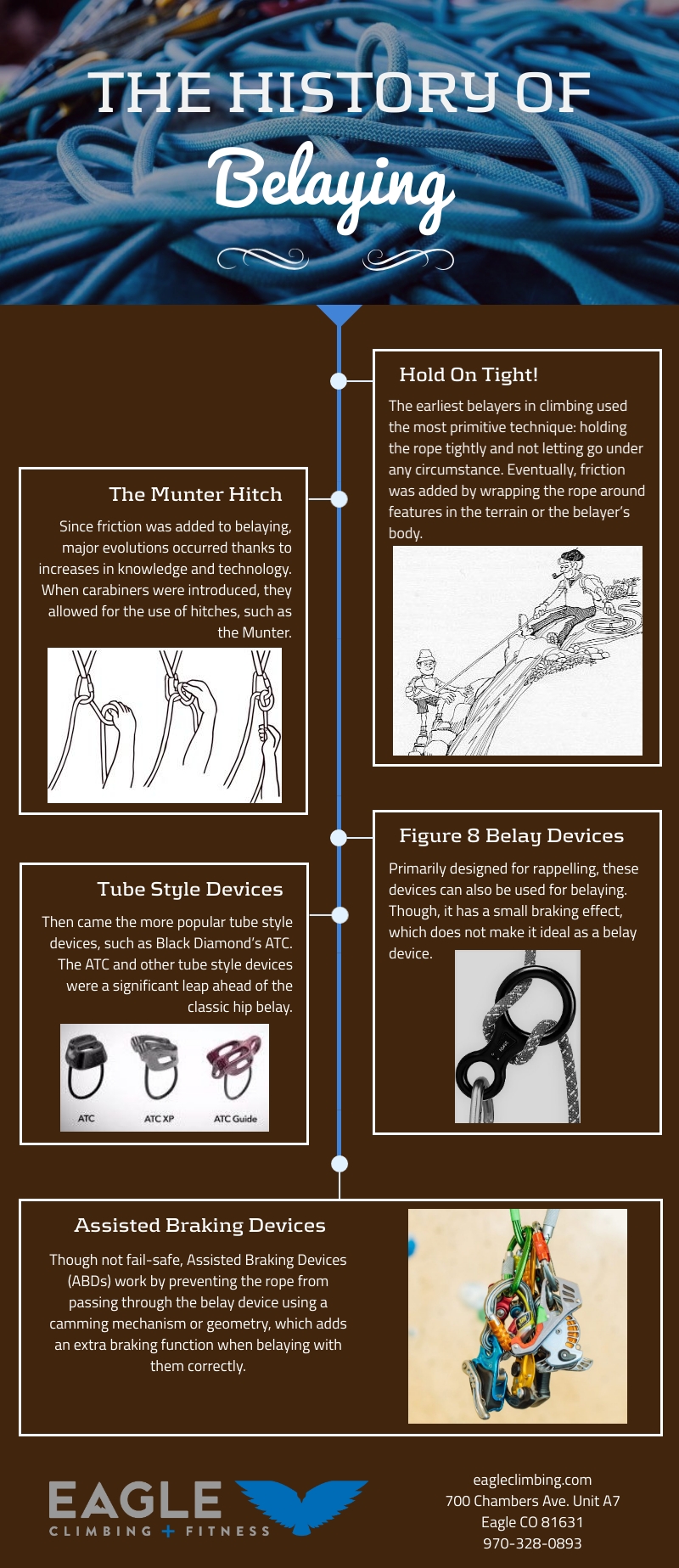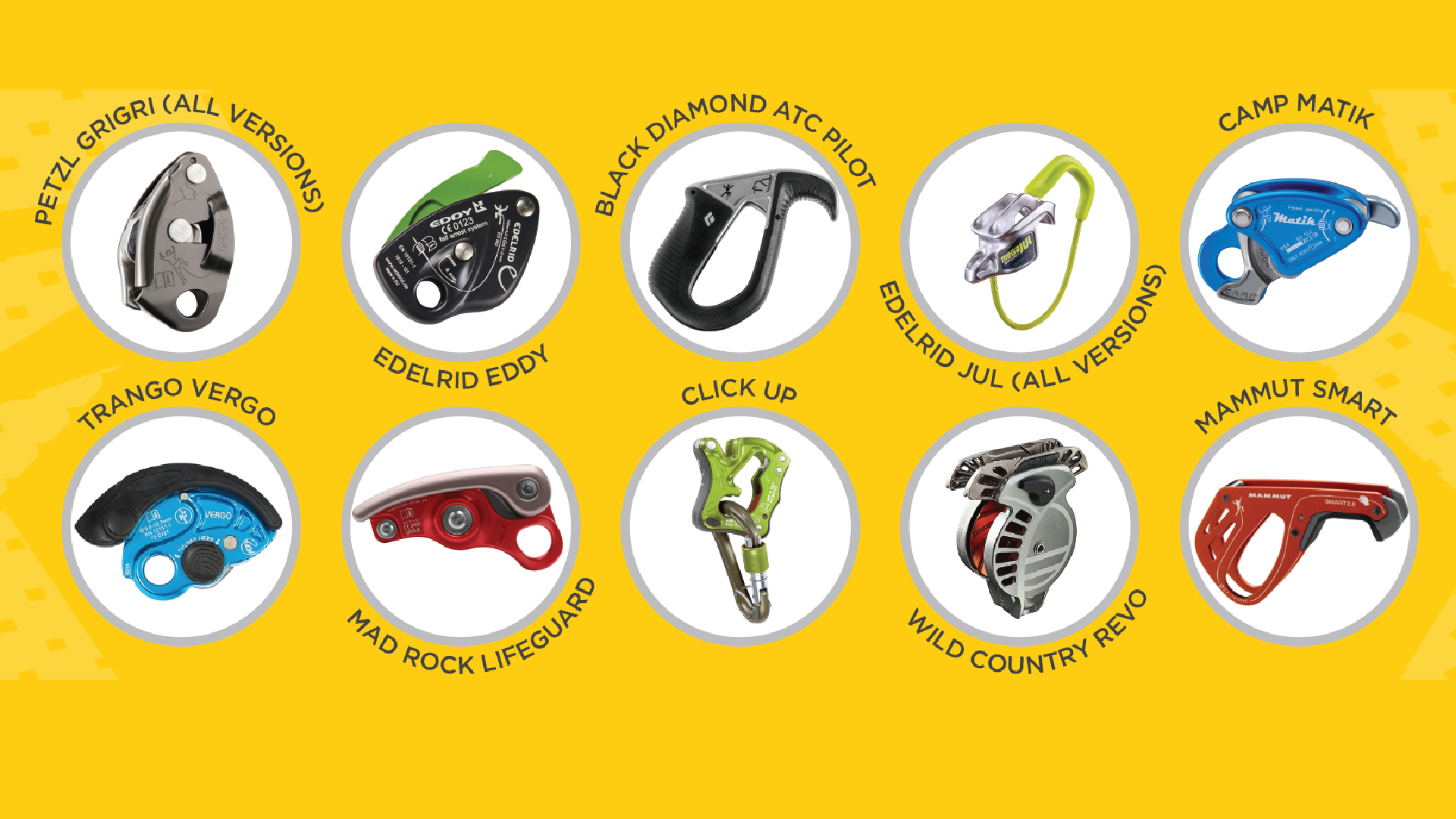Why?
At Eagle Climbing + Fitness, your safety is our number one priority.
As the sport of rock climbing continues to evolve, so does the technology, technique, and gear used to minimize the inherent risks for you and your partner.
The art of belaying has changed dramatically over the course of a few decades. Climbers used to rely on hip belays or the Munter Hitch before belay devices entered the scene. Early belay devices like the figure-8 plate were soon replaced by the popular tube style belay devices like the Black Diamond ATC. The ATC and other tube style devices were a significant leap ahead of the classic hip belay, but represent just one point in the continued evolution of rock climbing technology.
ABDs like the Petzl Grigri, the Edelrid Jul and Mega Jul, the Black Diamond Pilot, and other similar devices erupted onto the retail market. Though not fail-safe, ABDs function by preventing the rope from passing through the belay device using geometry or camming units. This change adds an extra braking function when used correctly for belaying. Because of an ABD’s ability (when used properly) to assist in “catching” a climber, they’ve become widely used in the climbing industry.
We recognize that ATCs and other tube style devices still have a place in climbing, this change is simply an effort to reduce risk in our facility.
Again, your safety is our first priority, and we would be absolutely devastated if a life changing accident happened in our facility that could have been prevented. We feel it is our duty to reduce these incidents to the best of our ability. Offering education and requiring ABDs, a move many climbing gyms across the nation and throughout the world are making to improve safety in their facilities, is the next step in making sure everyone returns home safely after a great session at the gym.
Please be aware that ABDs are NOT considered auto-locking or foolproof. Attentive belaying and using the PBUS (Pull-Brake-Under-Slide) belay method is always required at Eagle Climbing + Fitness.


